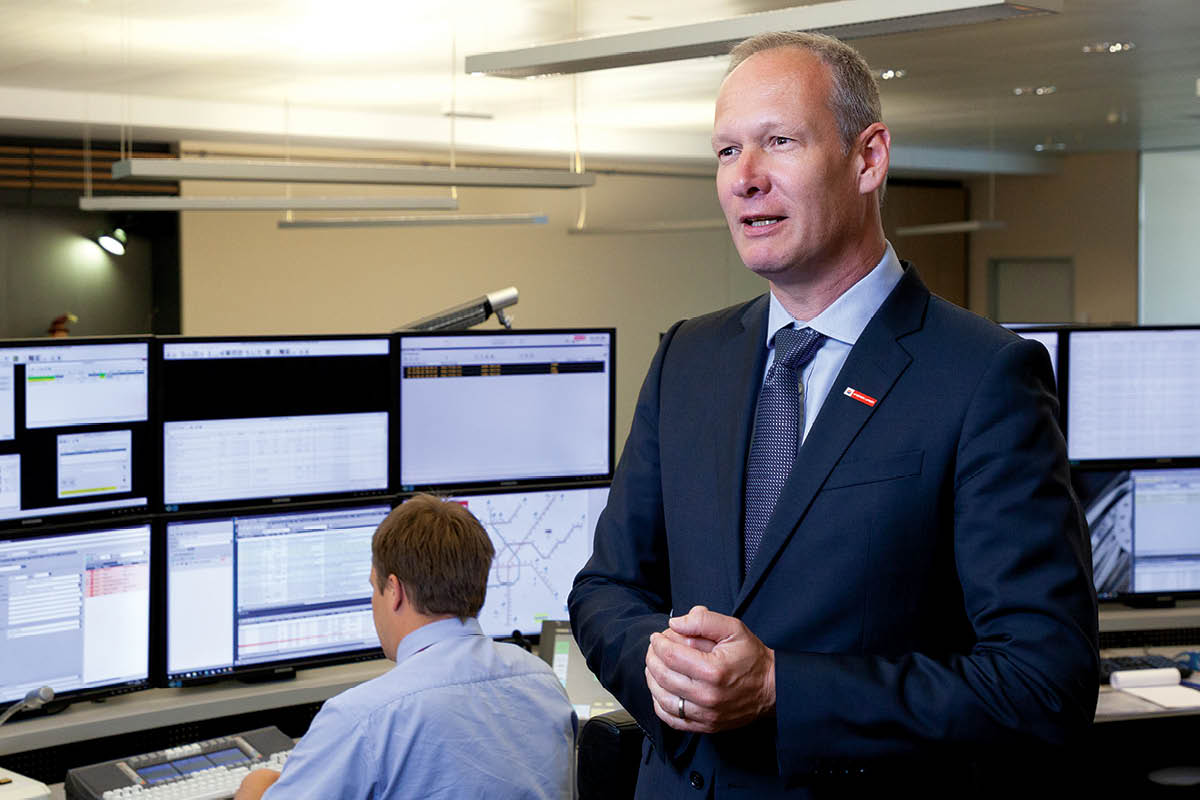Vienna’s buses, trains, trams, metro cars and underground lines will take you almost anywhere in the city in no time at all. Famous for its efficiency, Vienna public transport company Wiener Linien operates five underground lines, 29 tram lines and 127 bus lines, of which 24 are night lines. On weekends and public holidays, the Vienna underground runs all night. The Wiener Linien vehicle fleet currently consists of 500 tramcars, 780 metro railcars and over 450 buses.
Until its decentralisation on 11 June 1999, Wiener Linien was Wiener Stadtwerke – Verkehrsbetriebe, a directly administered subsidiary of the Vienna city government. Wiener Linien currently employs more than 8,000 people to ensure that the 38% of all journeys in Vienna that are completed using public transport run smoothly.

This highly efficient and much-loved operational network is led by General Operation Manager Stephan Lewisch. In the early hours of each morning, Stephan meets with his personal assistant and secretary to plan the day. Seeing the way he leads the company so effortlessly, it might come as a surprise that he was not interested in the transport sector in his youth.
“I always preferred the general planning process. It was pure luck that somebody told me that Wiener Linien is always planning in a general way, and that they use consultants for the detailed construction. So, I applied, and my journey started from there,” he recalls.
Stephan is proud of how far Wiener Linien has come; however, this does not mean it is without problems. The company’s main challenge is digitalisation as it needs to gather data to optimise predictive maintenance (PdM). This is a technique used to predict when maintenance would be necessary, based on the actual condition of in-service equipment; rather than using time or age factors as with conventional preventive maintenance.
Thus, Wiener Linien saves more on costs and time, for servicing is done only as and when necessary. Other potential advantages include increased equipment life and plant safety, fewer accidents with negative impact on the environment, and optimised spare parts handling.
“It’s all about the right information at the right time, because knowing which equipment needs maintenance ahead of time means unplanned stops are minimised,” says Stephan. “The challenge is gathering all the data needed for PdM, so we can solve problems early, prevent interruptions and ensure smooth journeys for everyone.”
“The challenge is gathering all the data needed for PdM, so we can solve problems early, prevent interruptions and ensure smooth journeys for everyone.”
Wiener Linien is aiming for a billion passengers by 2020, as well as a 40% market share of transport usage. Not far off its goal, the organisation currently serves 964 million annual passengers, and aims to utilise its strong work culture to achieve it. Uniquely, passengers are also represented in the organisation by a Passenger Advisory Council, and can make suggestions for improvements. Council members serve four-year terms.
To Stephan, a leader is responsible for ensuring their employees are in the best environment for maximum effectiveness. Four years ago, there was a complete overhaul of Wiener Linien’s operational structure. This involved appointing an individual to manage the drivers as well as a new communication strategy, with more consistent meetings for
all levels, in all functions.
Originally, Wiener Linien had no designated managers for its drivers. Now, with clear managers and roles, everyone knows they have someone they can look up to. Further, yearly targets, open conversations and consistent check-ins ensure everyone from drivers to track workers are taken care of.
As for the future, Wiener Linien has opened its doors to consulting. Recently, it consulted for a large Austrian town on a tram system. It’s a new path for Wiener Linien. “We don’t have experience in this type of business, so we have to start from scratch. It’s still a very new world that carries a large risk; every little thing requires attention and thought.


